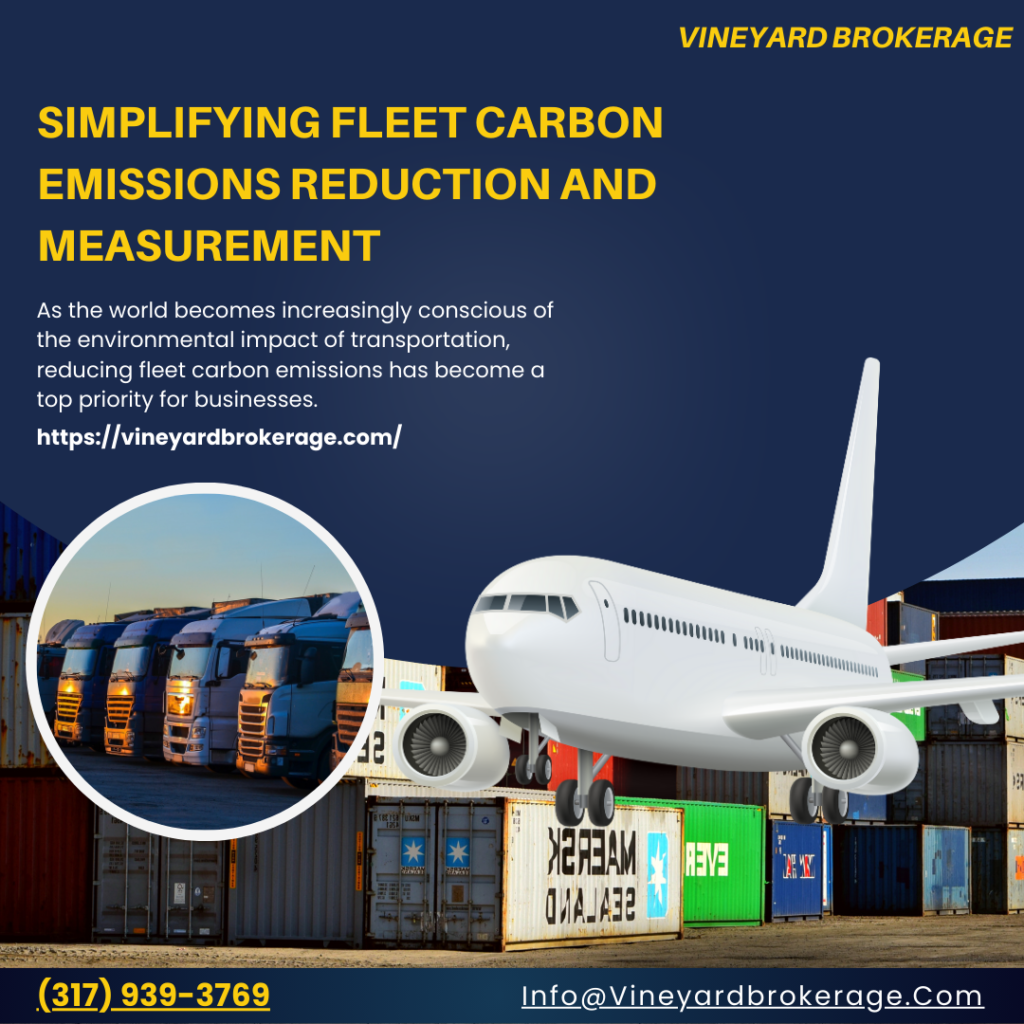A Sustainable Drive: Simplifying Fleet Carbon Emissions Reduction and Measurement

As the world becomes increasingly conscious of the environmental impact of transportation, reducing fleet carbon emissions has become a top priority for businesses. Not only does it contribute to a greener planet, but it also helps organizations improve their sustainability efforts and reduce operational costs. In this article, we will explore practical and effective strategies to easily reduce and measure fleet carbon emissions, enabling businesses to take meaningful steps towards a more sustainable future.
Fleet Optimization
Efficient fleet management is the cornerstone of carbon emissions reduction. Start by evaluating your fleet’s composition, size, and utilization. Consider downsizing the fleet, replacing older vehicles with fuel-efficient or electric alternatives, and implementing right-sizing strategies to ensure that vehicles match operational needs. By optimizing your fleet, you can significantly reduce carbon emissions while maximizing resource utilization.
Driver Training and Behavior
Promoting eco-friendly driving practices among your drivers can yield substantial emissions reductions. Encourage smooth acceleration and deceleration, maintain appropriate tire pressure, and discourage excessive idling. Implement driver training programs that emphasize fuel-efficient driving techniques and raise awareness about the impact of carbon emissions. Monitoring driver behavior through telematics and providing regular feedback can help drive positive changes.
Route Optimization and Vehicle Maintenance
Efficient route planning not only saves time but also reduces fuel consumption. Utilize advanced fleet management software that incorporates real-time data to optimize routes, minimize mileage, and avoid traffic congestion. Regular vehicle maintenance, including timely oil changes, air filter replacements, and tire maintenance, ensures optimal performance and fuel efficiency, leading to lower carbon emissions.
Transition to Electric and Alternative Fuel Vehicles
Consider transitioning a portion or the entirety of your fleet to electric vehicles (EVs) or vehicles powered by alternative fuels. EVs produce zero tailpipe emissions, offering a significant reduction in carbon footprint. With the increasing availability and affordability of EV models, coupled with government incentives and expanding charging infrastructure, making the switch has become more feasible and attractive for businesses.
Monitoring and Measurement
Accurate measurement of fleet carbon emissions is essential for tracking progress and setting realistic reduction targets. Implement telematics and fleet management systems that provide real-time data on fuel consumption, mileage, and carbon emissions. Use industry-standard calculators and methodologies to calculate emissions, and leverage software tools that streamline data collection and reporting. Regularly review and analyze emission data to identify areas for further improvement.
Collaborate and Share Best Practices
Engage with industry associations, government initiatives, and sustainability-focused organizations to stay updated on best practices and emerging technologies for carbon emissions reduction. Collaborate with peer organizations to share experiences and knowledge, leveraging collective expertise to accelerate progress towards sustainability goals. Participate in industry forums and workshops that promote sustainable fleet management practices.
Bottom Line
Reducing and measuring fleet carbon emissions is a critical step towards achieving sustainability goals and minimizing environmental impact. By optimizing fleet composition, training drivers, optimizing routes, transitioning to cleaner vehicles, and implementing effective monitoring systems, businesses can make significant strides in their carbon emissions reduction efforts. Embrace the opportunity to lead the way towards a greener future, one mile at a time, by implementing these practical strategies and embracing a sustainable fleet management approach.

